Capital assets, dividends, gross profit margin, floating liabilities, working capital… When it comes to owning and running a small business, there are many financial terms involved. It can be overwhelming! Like most small business owners, you probably find it more satisfying to create products and connect with customers than to worry about finances. However, understanding key financial terms is crucial for the success of your business.
In this blog post, we explore a few financial terms every small business owner should know. By familiarizing yourself with these terms, you can better understand your financial situation and make more informed decisions.
Assets
An asset is something that your business owns or controls. This can be buildings, furniture, vehicles, equipment, inventory, cash, prepaid expenses, and more. There are long-term and short-term assets.
Long-term assets, also known as capital or fixed assets, are assets used for a long period. They are not intended for sale in the normal course of business. Long-term assets are typically recorded on the balance sheet to be depreciated over time. Examples of capital assets include buildings, machinery, vehicles, and furniture.
Short-term assets, called current assets, are much more liquid. They are assets that are expected to be used up, converted to cash, or sold in a relatively short timeframe; likely within a year. Some examples of current assets are cash, accounts receivable, and inventory.
Accounts receivable are recorded as a debit in the assets section of a balance sheet. This is money owed to you. We consider accounts receivable as short-term or current assets because they’re usually collected within a few months.
Liabilities
A liability is something your business owes another entity and, as such, can be thought of as the opposite of an asset. Your liabilities include accounts payable, wages owed to employees, and any loans or mortgages associated with your operations. Just like there are long-term and short-term assets, there are also long-term and short-term liabilities.
Fixed liabilities are long-term debts that are expected to be paid over time. Some examples of fixed liabilities are a mortgage, a long-term loan, or a long-term lease. In contrast, current liabilities, sometimes called floating liabilities, are short-term debts that your business needs to settle within one year. These include short-term loans, taxes payable, accrued expenses, and accounts payable.
Accounts payable shows current liabilities arising from credit purchases from suppliers or vendors. It represents the amount your business owes creditors for goods or services received but not yet paid for and is part of the normal course of business. Monitoring your accounts payable is essential for maintaining healthy relationships with suppliers and managing your cash flow.
Working Capital
Working capital is a measure of your business's liquidity and its ability to meet short-term financial obligations. It is calculated by subtracting your current liabilities from your current assets. Positive working capital indicates that your business has enough liquid assets to cover its short-term debts and expenses. Monitoring your working capital regularly can help you gauge your financial health and make informed decisions about managing your cash flow.
Breakeven Point
The breakeven point is like the tipping point for your business. It is the point where you sell just enough to cover all your costs but don't yet make any profit. Knowing your breakeven point is crucial for setting realistic sales targets and pricing strategies. It also lets you see how changes in costs or prices might affect your profits. Doing the math to calculate your breakeven point is fairly simple, but first, you must figure out your fixed and variable costs. This is called performing a Breakeven Analysis.
Gross Profit
Gross profit is a key financial metric that represents the difference between revenue and the cost of goods sold (COGS). It is a measure of a company's profitability that focuses specifically on the production and sale of goods.
The formula is: Gross Profit = Revenue − Cost of Goods Sold (COGS)
Revenue is the total income generated from the sale of goods or services before deducting any expenses. Cost of Goods Sold (COGS) represents the direct costs associated with the production of goods that a company sells. These costs typically include the cost of raw materials, direct labor, and manufacturing overhead. COGS does not include indirect costs such as sales and marketing expenses, rent, utilities, and other overhead costs. By subtracting COGS from revenue, you are left with gross profit.
Gross profit provides insight into how well a company is producing and selling its core products. From this, you can calculate the gross profit margin by dividing gross profit by net revenues and then multiplying by 100%. A higher margin suggests a healthier return on sales, indicating profitability. (Learn more about gross profit margin at bcd.ca)
Cash Flow
Cash flow refers to the movement of money in and out of your business over a specific period. It's important to monitor your cash flow to ensure you have enough funds to cover expenses and invest in growth. Positive cash flow means you have more money coming in than going out, while negative cash flow indicates the opposite.
Balance Sheet
A balance sheet is a financial document that provides a snapshot of your business's financial position at a given point in time. It presents your assets, liabilities, and equity, allowing you to assess your business's net worth. It helps you understand how much your business owns (assets), owes (liabilities), and how much is invested by owners (equity).
In conclusion, while the world of business finance can be daunting, small business owners need to familiarize themselves with key financial terms. Understanding these terms allows you to read your financial statements, communicate effectively with your accountant and bookkeeper, and make informed business decisions. Remember, knowledge is power, and being informed about your business's finances is a crucial step toward achieving your entrepreneurial goals.
To assist you further, Community Futures Wild Rose offers a free Guide to Financial Terms, which you can download from our resources page. This guide provides detailed explanations of various financial terms and concepts to help you navigate the world of business finance. Additionally, feel free to contact our Business Development Officer at




